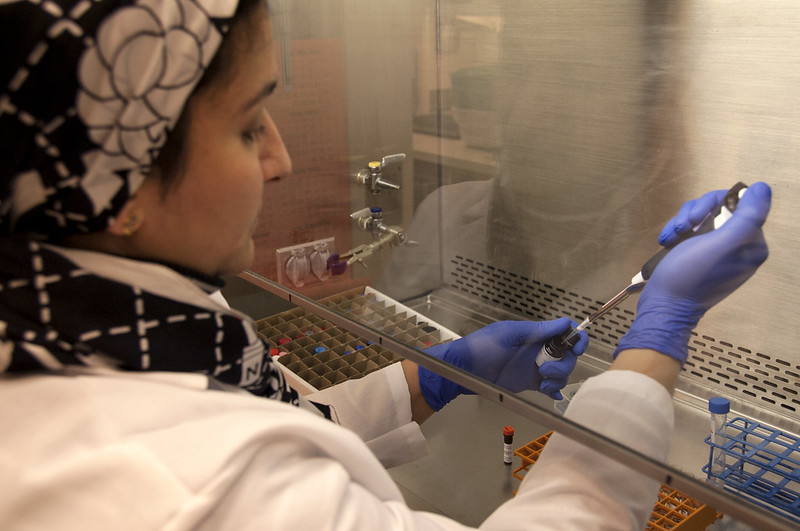Is the United States a step closer to approving a form of stem cell transplants as a treatment for multiple sclerosis?
That’s because the National Multiple Sclerosis Society (NMSS) has slightly changed its view of autologous hematopoietic stem cell transplantation, or aHSCT.
aHSCT involves removing a patient’s own stem cells from the blood or bone marrow, using chemotherapy to kill off most of the immune system, and then injecting the stem cells back into the patient. Those stem cells regenerate the immune system, hopefully without any of the rogue immune cells that attack the nervous system and create MS symptoms.
New NMSS recommendations
Until now, the National MS Society had failed to make recommendations about how any form of stem cell transplants should be used, at least as far as my research can determine. Now, in an article in JAMA Neurology, a group of neurologists, including members of the NMSS National Medical Advisory Committee, are outlining parts of a stem cell protocol.
The NMSS is now being specific about who might be a candidate for aHSCT:
“The National Multiple Sclerosis Society believes that AHSCT may be a useful treatment option for people with relapsing multiple sclerosis who demonstrate substantial breakthrough disease activity (ie, new inflammatory central nervous system lesions and/or clinical relapses) despite treatment with high-efficacy disease-modifying therapy or have contraindications to high-efficacy disease-modifying therapies.”
That language seems more aggressive than what the NMSS wrote about an Italian study published earlier this year. In that commentary, the society suggested the procedure “might be appropriate” for people with secondary progressive MS, and it suggested further study with a larger group:
“These results suggest that HSCT might be appropriate in a subgroup of people with SPMS that have significant inflammatory activity as measured by MRI. Further study in larger numbers are needed to understand who among those with secondary progressive MS might benefit from HSCT.”
The new guidelines clearly outline which people with relapsing-remitting MS might benefit. They are younger than 50 and have lived with an MS diagnosis for less than 10 years.
The authors recommend that stem cell transplantation be performed in medical centers with “substantial experience and expertise.” A follow-up regime is proposed, along with the creation of a single database to track people who undergo the procedure. But the article cautions that more research is needed to establish best practices for handling the stem cells and other technical processes.
What if you don’t want to wait?
Some hospitals and clinics in Russia, Mexico, and other locations offer aHSCT to MS patients at a cost of about $50,000. aHSCT also is provided to some MS patients through the U.K’s National Health Service. A list of aHSCT facilities worldwide is available at www.hsctstopsms.com.
What about a stem cell transplant trial?
The authors of the JAMA Neurology article suggest a clinical trial may be the place for someone who wants their MS treated with a stem cell transplant right now. A well-known trial by Dr. Richard Burt shut down about a year ago. However, a trial called BEAT-MS has been enrolling patients at several locations in the U.S. You can find information about other studies at clinicaltrials.gov.
The authors note that joining a trial “would assure the patient of quality care with an acceptable protocol and provide the personal satisfaction of knowing they are contributing to answering a very important question for people with MS.”
That sounds like a pretty good suggestion to me since the U.S. likely has a long way to go before aHSCT for MS becomes common here, even with the NMSS’ backing. But it’s encouraging that it’s finally gaining some traction.
A version of this post first appeared as my column on the MS News Today website.
(Featured image by U.S. Food and Drug Administration)



